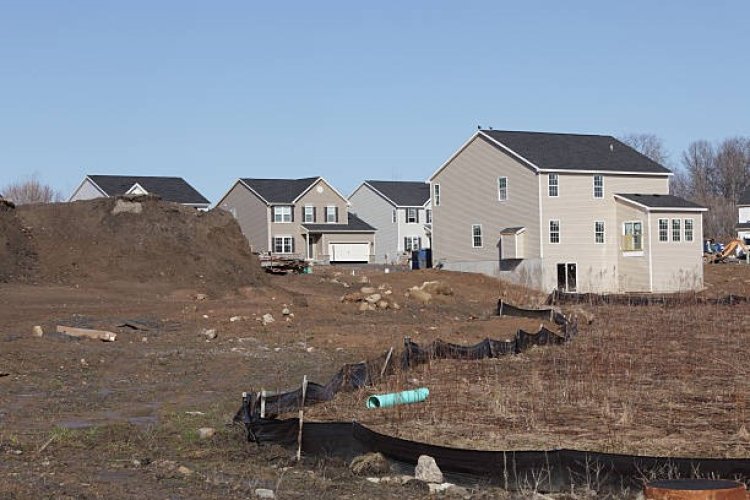Installation and Compliance: The Crucial Role of Silt Fencing Construction Services in Maryland
The Essential Part of Silt Fencing Construction Services in Maryland. Explore the installation method, benefits, and tools of Silt Fencing construction.

Problems relating to erosion are concerning and can negatively impact your surroundings. Many silt fencing construction services in Maryland prioritize the need for silt fencing in the construction and landscaping world. Undoubtedly, silt fencing plays a vital role in managing and controlling sediment runoff. In addition to having complete knowledge of silt fencing, it is recommended to be aware of the process of silt fence compliance, installation, and other erosion-controlling devices.
Here’s everything you should know about silt fencing and its implementation to lead to a successful and environmentally friendly project outcome.
What is a Silt Fence?
Silt fences are utilized as temporary barriers during landscaping and building projects to keep silt from departing the site and damaging neighboring water sources. Usually composed of polypropylene woven cloth, it traps soil particles and sediments while allowing water to pass through.
A silt fence's primary function is to regulate water flow and prevent erosion on a property while minimizing its negative environmental effects. These fences act as a first line of defense, catching eroded soil before it reaches rivers, streams, or other vulnerable regions, provided they are placed correctly.
Benefits Of Complaint Silt Fencing Construction Services in Maryland
1- Protects From Stormwater Pollution
Stormwater pollution is mostly caused by soil erosion from building, development, and construction sites. Sediment, debris, and other materials washed from construction sites that wash into gutters and stormwater drains can choke silty streams, cause flooding, and harm the water quality and fish populations in our rivers and coastal waters. When a silt fence is installed correctly, it can help to keep away silt, dirt, and other debris from construction sites, making their way to our local streams and rivers.
2- Avoiding Costly Fines
Local governments and councils closely oversee construction sites to ensure they follow the environmental standards to protect our local waterways from the damaging effects of stormwater pollution. Building erosion control measures that comply with regulations can be expensive, and government agencies and local councils may fine and punish violators immediately.
3- Prevent On-Site Erosion
A worksite project can be shielded from expensive erosion damage by hiring Silt Fencing Construction Services in Maryland and by implementing preventative erosion control techniques before a rainy event. Severe storms, heavy rain, flash floods, or even a brief cloudburst can easily cause significant erosion damage.
4- Ensuring Site Work Integrity
Following laws and regulations is essential for anybody working in the construction sector since the general public frequently visits work sites. A site's reputation can suffer greatly, and the firm as a whole, if it is thought to be harming the local environment. Conversely, a business that demonstrates initiative in mitigating environmental impacts and controlling erosion can enhance its public perception by demonstrating a general concern for the surrounding environment and community.
5- Safety Purposes
Work areas or uneven grounds are kept safe by silt fences. They help in reducing soil erosion and runoff, thereby contributing to the reduction of mishaps involving slippery and unstable land. Silt fences act as barriers that provide protection, ensuring that our workplace remains safe and accident-free. It helps to make sure everything is in its proper position so we may concentrate on our work without being distracted by unforeseen threats.
Tools and Equipment Recommended by Silt Fencing Construction Services in Maryland
1- Posts and Stakes
The silt fence is structurally supported by posts and stakes. They are made of a variety of materials, including plastic, metal, and wood. The decision is based on the project's money, timeline, and environmental factors. For example, metal stakes give greater strength, but wooden stakes are recommended for their biodegradability.
2- Fabric for Silt Fence
Usually, woven polypropylene is utilized to make the fabric for silt barriers. Silt fencing construction services in Maryland recommend this material due to its strength, permeability, and capacity to withstand UV and chemical exposure. While capturing silt and dirt particles, the cloth lets water flow through.
3- Tool Trenching
An essential first step in installing a silt fence is digging a trench. The trench where the silt fence will be secured is made with tools, including shovels, spades, and trenchers. Hand tools like shovels might work well for smaller jobs, but mechanical trenchers can speed up the process for larger sites.
4- Fasteners
Fasteners like wire ties, zip ties, or staples are used to fasten the silt fence cloth to the stakes to keep the barrier in place. The material of the stakes, the anticipated length of the project, and environmental considerations can all influence the fastener choice.
Installation Guide to Silt Fencing
Here’s the process of silt fence installation recommended by silt fencing construction services in Maryland:
1- Evaluation of the Site
It is important to evaluate the location before starting. Consider the land's slope, the water's flow, and the composition of the soil. Ideally, the silt fence should be positioned along the site's contour lines, perpendicular to the direction of the water flow. Note any obstructions that can interfere with installation, including trees or buildings.
2- Digging Up a Trench
Digging a trench is the next stage after determining the placement. For stability, Silt Fencing Construction Services in Maryland prefer that the trench be roughly 6 inches deep and 6 inches wide. Dig the trench following the designated line, starting at one end and maintaining a constant depth.
3- Fabric Installation
Once the trench is prepared, the silt fence fabric needs to be installed. Roll out the fabric along the trench using fasteners and fasten it to the stakes. To guarantee adequate anchoring, the fabric needs to reach into the trench. A uniform spacing of stakes should be used to provide support and ensure that the fabric is stretched and secure.
4- Backfilling
Backfilling the trench is the last stage. Reposition the dirt that was removed during the trenching process over the trench's lower edge of the fabric. In doing so, a barrier is formed that prevents water from passing beneath the fence.
Wrapping Up
A silt fence is essential in efficiently controlling sediment in landscaping and building projects. You can make sure your silt fence lasts a long time and works well by being aware of the necessary equipment and installation methods. A successful installation relies heavily on site-specific conditions, compliance considerations, and regular maintenance. Is there a reliable silt fencing construction service in Maryland? Yes, at Natural Concepts Landscaping and Fencing, we provide dependable, affordable, and responsible silt fence solutions that are customized to meet your needs.












